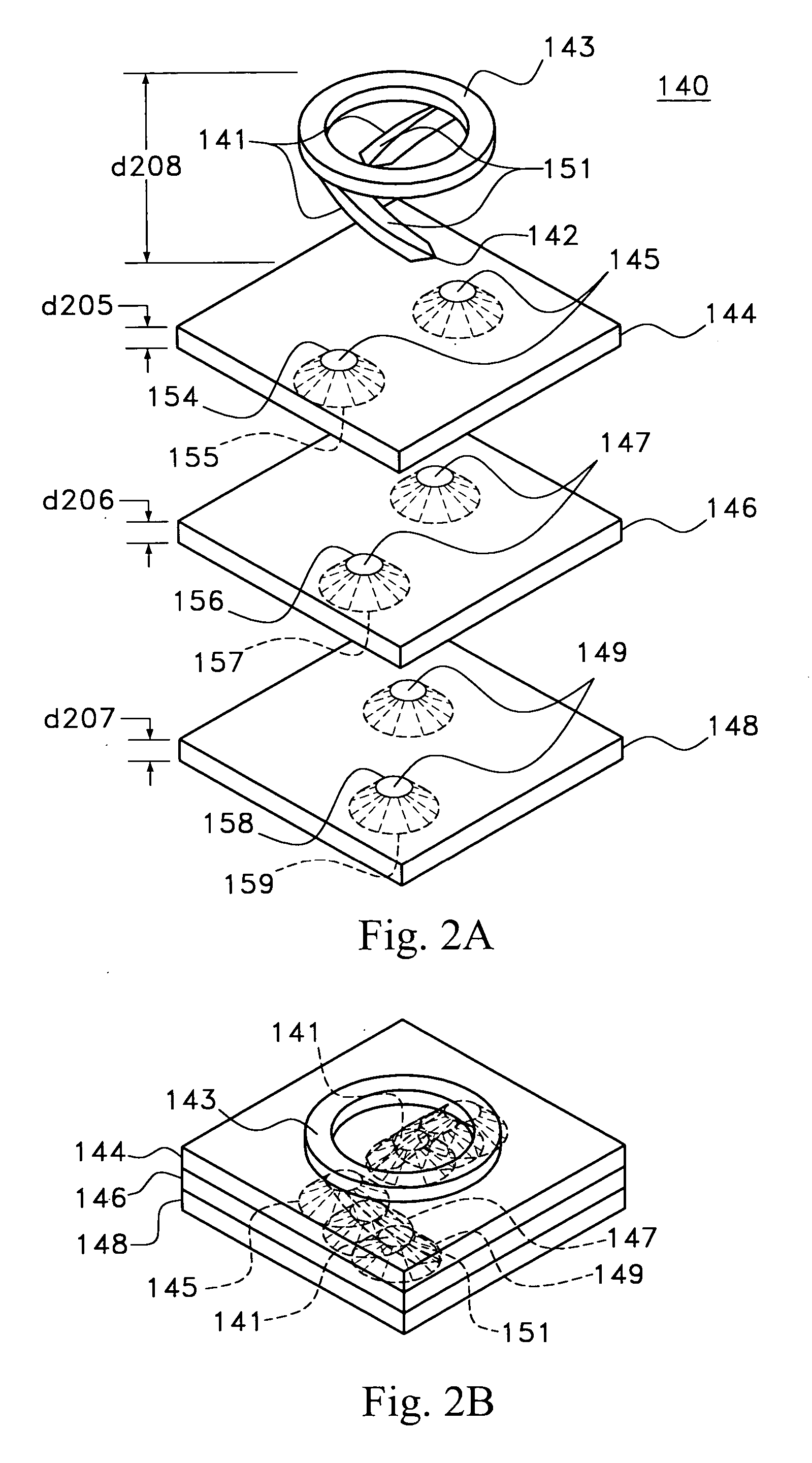Rotary fastener, fastenable material, fastener system, and storage system
- Summary
- Abstract
- Description
- Claims
- Application Information
AI Technical Summary
Benefits of technology
Problems solved by technology
Method used
Image
Examples
Embodiment Construction
[0037] Referring to FIG. 1A, short turn rotary fastener 10 is a full turn fastener comprising a prong 11, a slotted cap 13, and a tip 12. When viewed along an axis from slotted cap 13 to tip 12, short turn rotary fastener 10 fastens in a counter-clockwise direction.
[0038] Short turn rotary fastener 20 is a quarter turn fastener comprising a prong 21, a slotted cap 23, and a tip 22. When viewed along an axis from slotted cap 23 to tip 22, short turn rotary fastener 20 fastens in a clockwise direction.
[0039] In this embodiment, tip 12 is a square point and tip 22 is a chisel point.
[0040] Still referring to FIG. 1A, fastenable material 18 comprises prong receptor 16, and fastenable material 19 comprises prong receptor 17. In this embodiment, both fastenable material 18 and fastenable material 19 are a soft material such as pine wood. Prong receptor 16 and prong receptor 17 are designed to cooperate with short turn rotary fastener 10 such that prong 11 can be inserted into, and engag...
PUM
 Login to View More
Login to View More Abstract
Description
Claims
Application Information
 Login to View More
Login to View More - R&D
- Intellectual Property
- Life Sciences
- Materials
- Tech Scout
- Unparalleled Data Quality
- Higher Quality Content
- 60% Fewer Hallucinations
Browse by: Latest US Patents, China's latest patents, Technical Efficacy Thesaurus, Application Domain, Technology Topic, Popular Technical Reports.
© 2025 PatSnap. All rights reserved.Legal|Privacy policy|Modern Slavery Act Transparency Statement|Sitemap|About US| Contact US: help@patsnap.com



